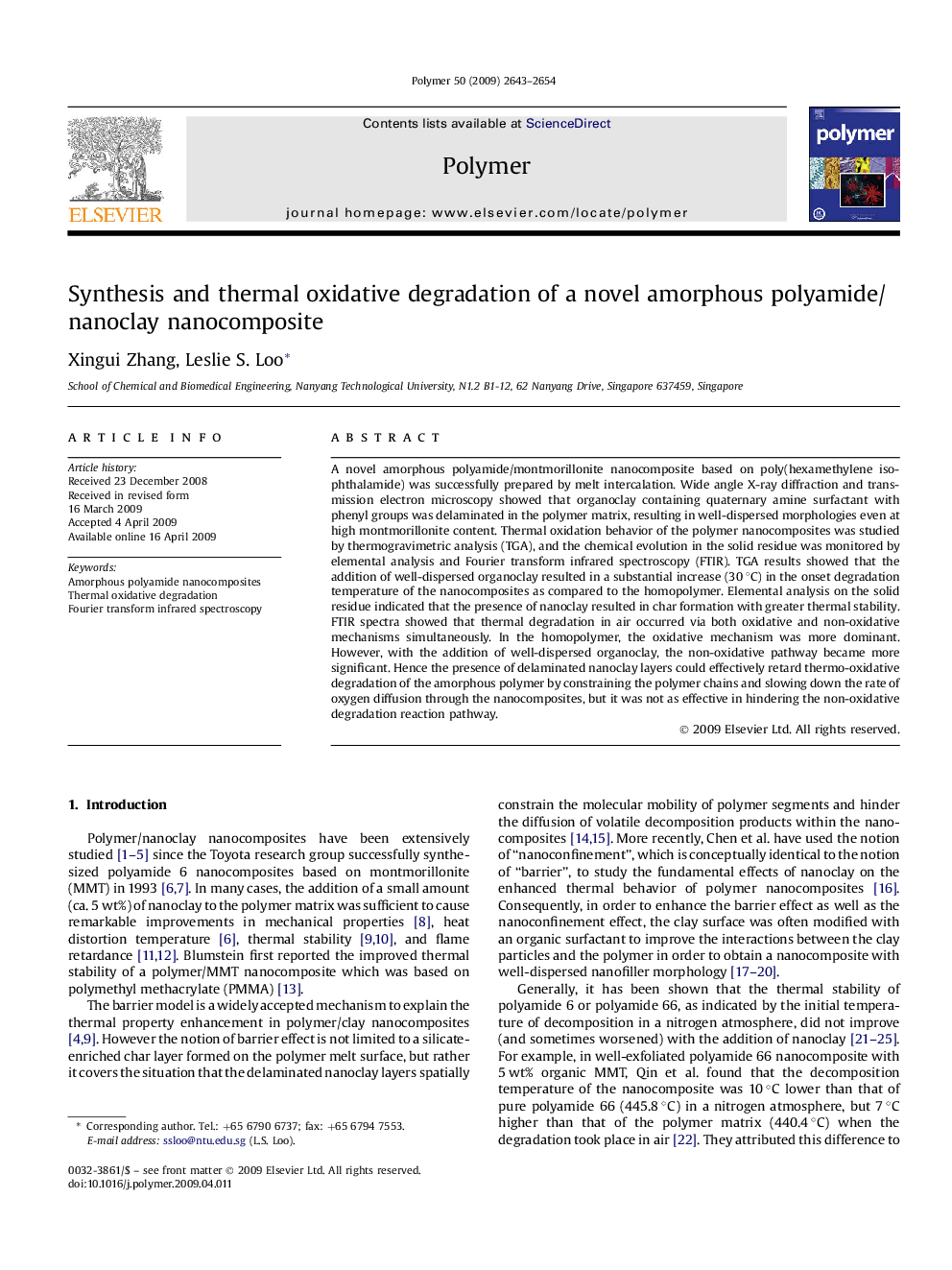| Article ID | Journal | Published Year | Pages | File Type |
|---|---|---|---|---|
| 5188026 | Polymer | 2009 | 12 Pages |
A novel amorphous polyamide/montmorillonite nanocomposite based on poly(hexamethylene isophthalamide) was successfully prepared by melt intercalation. Wide angle X-ray diffraction and transmission electron microscopy showed that organoclay containing quaternary amine surfactant with phenyl groups was delaminated in the polymer matrix, resulting in well-dispersed morphologies even at high montmorillonite content. Thermal oxidation behavior of the polymer nanocomposites was studied by thermogravimetric analysis (TGA), and the chemical evolution in the solid residue was monitored by elemental analysis and Fourier transform infrared spectroscopy (FTIR). TGA results showed that the addition of well-dispersed organoclay resulted in a substantial increase (30 °C) in the onset degradation temperature of the nanocomposites as compared to the homopolymer. Elemental analysis on the solid residue indicated that the presence of nanoclay resulted in char formation with greater thermal stability. FTIR spectra showed that thermal degradation in air occurred via both oxidative and non-oxidative mechanisms simultaneously. In the homopolymer, the oxidative mechanism was more dominant. However, with the addition of well-dispersed organoclay, the non-oxidative pathway became more significant. Hence the presence of delaminated nanoclay layers could effectively retard thermo-oxidative degradation of the amorphous polymer by constraining the polymer chains and slowing down the rate of oxygen diffusion through the nanocomposites, but it was not as effective in hindering the non-oxidative degradation reaction pathway.
Graphical abstractDownload full-size image
